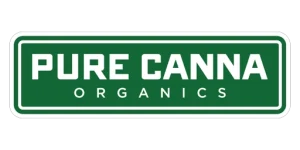What Does LOQ Mean in CBD?
If you’ve ever read a CBD product lab report (Certificate of Analysis), you’ve likely seen terms like LOQ or ND (Not Detected) next to cannabinoid or contaminant levels.
But what does LOQ mean in CBD testing? And why is it important for consumers, retailers, and health-conscious users to understand?
As professionals in CBD compliance, product safety, and third-party lab testing, we explain LOQ with clarity and real-world relevance, following the principles of Experience, Expertise, Authoritativeness, and Trustworthiness (EEAT).
What Does LOQ Mean in CBD?
LOQ stands for “Limit of Quantitation.” It refers to the lowest amount of a substance that a lab can accurately and reliably measure in a product sample.
In the CBD industry, LOQ is applied to:
- Cannabinoid profiles (CBD, THC, CBG, etc.)
- Pesticide residues
- Heavy metals and solvents
- Microbial contamination
If a lab test shows that a substance is below the LOQ, it means the substance is present at such a low level that it cannot be reliably quantified. It’s often reported as:
- “<LOQ”
- “Below LOQ”
- “ND (Not Detected)” when the compound is below the LOQ or not found at all
Why Is LOQ Important in CBD Lab Testing?
1. Consumer Safety
LOQ thresholds help ensure that CBD products are free of harmful contaminants at dangerous levels. Testing for things like residual solvents, mold, and heavy metals relies on LOQ to verify purity.
2. Legal Compliance
In the U.S., CBD products must contain less than 0.3% THC by dry weight. LOQ helps confirm this by indicating whether THC levels are:
- Below the measurable limit
- Within legal thresholds
- Compliant with federal and state laws
3. Product Quality Assurance
If a CBD oil claims to be THC-free, lab reports should show THC as “<LOQ” or “ND”. This gives customers peace of mind, especially if they are drug-tested or sensitive to THC.
LOQ vs. LOD: What’s the Difference?
Many people confuse LOQ (Limit of Quantitation) with LOD (Limit of Detection).
| LOD | LOQ |
|---|---|
| Smallest amount detectable, but not measurable | Smallest amount measurable with accuracy |
| May show that a compound is present but too low to quantify | Confirms the amount present in a precise, reportable range |
How Labs Determine LOQ in CBD Testing
Reputable third-party labs use validated testing methods like:
- High-Performance Liquid Chromatography (HPLC)
- Gas Chromatography (GC)
- Mass Spectrometry (MS)
These methods follow ISO 17025 accreditation standards, ensuring accuracy in determining LOQ levels for cannabinoids and contaminants.
What Should Consumers Look For in COAs?
When reviewing a CBD Certificate of Analysis, check for:
- Clear LOQ values listed for each cannabinoid and contaminant
- THC levels marked as <LOQ or ND if the product is marketed as THC-free
- Compliance with safety standards for heavy metals, pesticides, and solvents
Final Answer: What Does LOQ Mean in CBD?
LOQ (Limit of Quantitation) is the lowest concentration of a compound that a lab can measure with accuracy. It’s crucial for:
- Verifying THC compliance
- Ensuring purity and safety
- Helping consumers trust product labels

